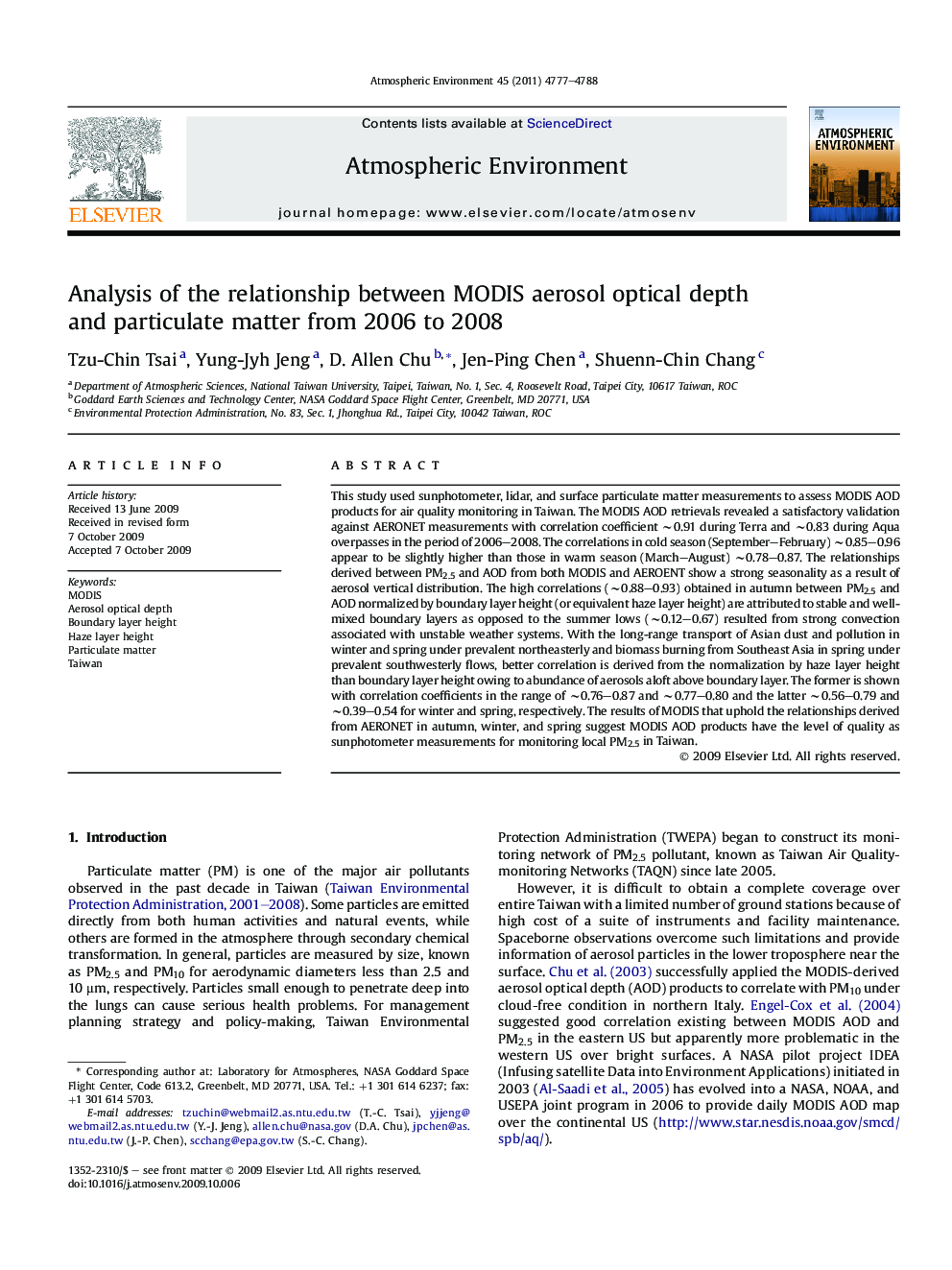| Article ID | Journal | Published Year | Pages | File Type |
|---|---|---|---|---|
| 4439774 | Atmospheric Environment | 2011 | 12 Pages |
This study used sunphotometer, lidar, and surface particulate matter measurements to assess MODIS AOD products for air quality monitoring in Taiwan. The MODIS AOD retrievals revealed a satisfactory validation against AERONET measurements with correlation coefficient ∼0.91 during Terra and ∼0.83 during Aqua overpasses in the period of 2006–2008. The correlations in cold season (September–February) ∼0.85–0.96 appear to be slightly higher than those in warm season (March–August) ∼0.78–0.87. The relationships derived between PM2.5 and AOD from both MODIS and AEROENT show a strong seasonality as a result of aerosol vertical distribution. The high correlations (∼0.88–0.93) obtained in autumn between PM2.5 and AOD normalized by boundary layer height (or equivalent haze layer height) are attributed to stable and well-mixed boundary layers as opposed to the summer lows (∼0.12–0.67) resulted from strong convection associated with unstable weather systems. With the long-range transport of Asian dust and pollution in winter and spring under prevalent northeasterly and biomass burning from Southeast Asia in spring under prevalent southwesterly flows, better correlation is derived from the normalization by haze layer height than boundary layer height owing to abundance of aerosols aloft above boundary layer. The former is shown with correlation coefficients in the range of ∼0.76–0.87 and ∼0.77–0.80 and the latter ∼0.56–0.79 and ∼0.39–0.54 for winter and spring, respectively. The results of MODIS that uphold the relationships derived from AERONET in autumn, winter, and spring suggest MODIS AOD products have the level of quality as sunphotometer measurements for monitoring local PM2.5 in Taiwan.
